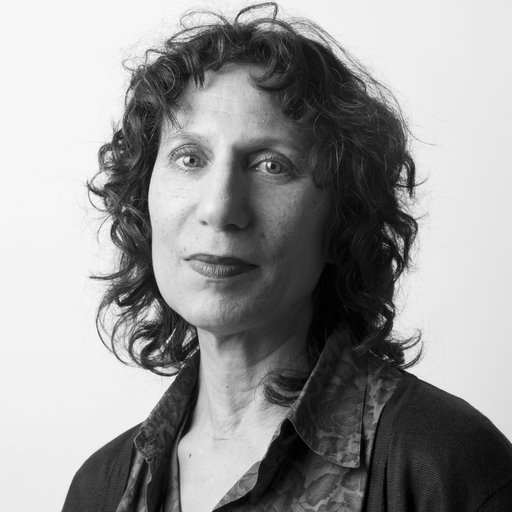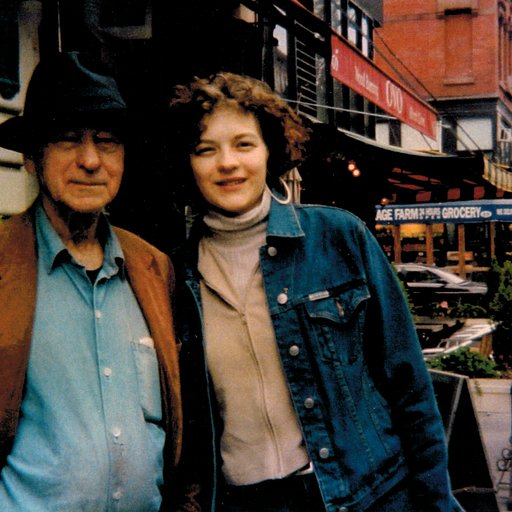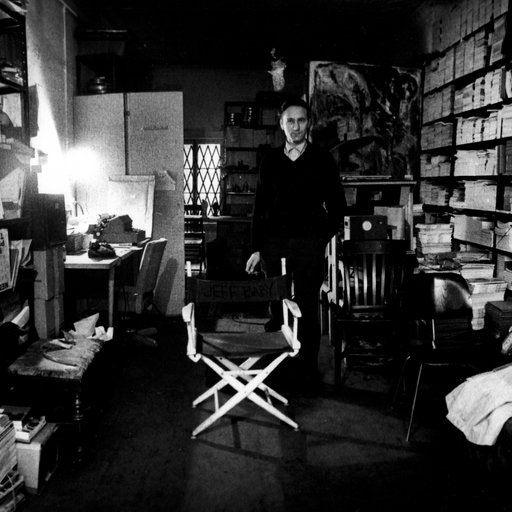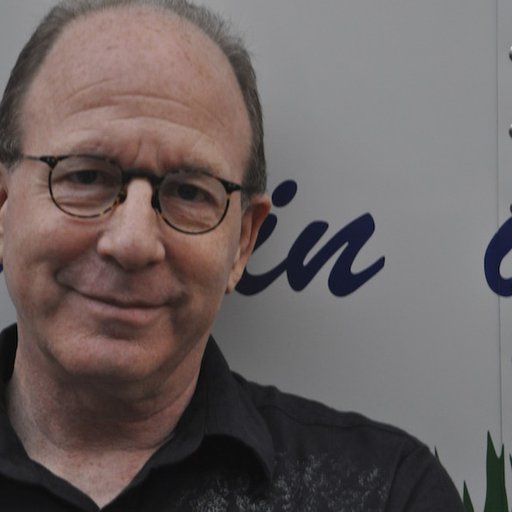The Aspen Art Museum has had a busy year. Last August, they opened the doors to their new building in downtown Aspen, a large, wood-wrapped space designed by the Pritzker Prize-winning Japanese architect Shigeru Ban; the museum’s attendance has tripled in the intervening months, no small feat for an arts institution in a town with around 5,000 permanent residents.
This newfound audience is not a simple function of the new digs, but rather a result of a concentrated effort by the museum’s director and CEO Heidi Zuckerman to raise the profile (and fill the coffers) of the institution. In the ten years since she took over, Zuckerman has transformed the Aspen Art Museum from a sleepy vacation town art center to what is quickly coming to be considered a world-class contemporary art museum.
Zuckerman, whose previous engagements include curatorial roles at the Berkeley Art Museum and Pacific Film Archive and the Jewish Museum in New York, combines a keen eye for emerging artists with an affinity for fundraising and interest-stirring. Aspen is known as a top destination for wealthy homeowners (many of whom, like John and Amy Phelan, are also among the world’s most influential collectors), and Zuckerman has successfully leveraged the resources of her adopted city through high-profile events like ArtCrush. The annual fundraiser (which runs from July 29 to 31) brings together elite artists, dealers, and collectors from around the world for a week of mountain hikes, champagne parties, and benefit auctions; under Zuckerman's tenure, it’s been established as a new gotta-be-there event in the already overstuffed international art fair calendar.
As the rise in attendance and other important figures suggest (Zuckerman has raised well over $100 million since she started; the largest single donation before her time was $75,000), these efforts and others like it have paid big dividends. Artspace’s Dylan Kerr caught up with Zuckerman in the midst of her preparations for this year's ArtCrush festivities to discuss the museum's role in the outdoorsy Aspen community, why it can get away with not having a permanent collection, and why she thinks her patrons get real returns on their investments.
How did you come to the Aspen Art Museum, and what did you find when you got there?
I came to Aspen via a search firm. I expected to find a super-small town, and I found an amazingly cosmopolitan small city. When I arrived in Aspen our staff was really small, our endowment was really small, and the museum was trying to be all things to all people. That never works.
How did Aspen become a gathering place for some extremely wealthy patrons of the arts, and what role did you have in connecting that demographic back to the museum?
Aspen has always celebrated the "Aspen Idea," which is "mind, body, spirit," and I think that it’s just been a magnet for some of the most interesting people from around the world. There were a lot of people who were very tangentially involved with the museum, and one of the first things that I did was look at people who had some kind of investment in the museum, even if it was only as a $50 individual member. My strategy was building the board, and cultivating the people that other people wanted to be in the room with.
What do you mean by “the people that other people want to be in the room with?”
The ones that everyone wants to know what their opinion is, that people want to spend time with, that people are attracted to. By putting together a really interesting mix of exciting people that other people want to be with, you can use that as a nexus to build a broader base of community and support.
One of the things we’ve done is start these really extraordinary donor trips. Most of the people who are involved with us are involved with other museums as well, so we have to do things a little bit differently in order to get people’s attention. We organize these phenomenal trips to super difficult places that people wouldn’t want to visit by themselves. That’s been a way for us to build our community. We just got back from Cuba. Last year, we went to Mexico City and Merida. The previous year we went to Buenos Aires, Rio, Saõ Paulo, and Inhotim, and the year before we went to Doha, Abu Dhabi, Sharjah, and Dubai.
The Aspen Art Museum is really a community—when we travel, we call ourselves “art pilgrims.” In general, I think people want to be part of something that matters. We’ve done a really great job of creating an institution that matters to a very wide section of people by advocating on behalf of the institution for that kind of support and by making our donors feel really confident with the returns on the investments that they make with us.
That’s a very specific way of talking about the value of an art museum, in terms of returns on investments. Where does this mindset come from, and why is it useful to think about an art museum in this way?
Sometimes people say to me “You run a museum in Aspen. There’s so much wealth there, so it’s got to be easy to fundraise there.” Actually, it’s so much harder to raise money from people who have a lot of money because, if they’re philanthropic—which, luckily, our supporters are—they get asked all the time. It’s actually much more difficult to raise support, because the asks from a variety of sources are so much more common and significant.
I’m very fiscally conservative, as I think is totally appropriate for a not-for-profit. Every dollar that we spend is given to us out of the generosity of someone else. We do have some earned income, but we’re primarily supported by individuals, so I think you have to be that much more judicious about the decisions that you make.
For a museum that’s located far outside of American art world capitals like New York or Los Angeles, the Aspen Art Museum has a really contemporary, dynamic program. Recent exhibitions include Gabriel Kuri, Alice Channer, and Cai Guo-Quiang. Do you see yourself as a tastemaker in Aspen, or are these shows more a response to what your audience wants to see?
It’s a funny thing, to ask me to comment on myself. It might be a better question to ask other people about me. I can tell you that my career has been built largely on solo exhibitions by artists before they become very well known. There's a group of artists that I’ve worked with over time and continue to work with, that I would say that my practice is aligned with. Some people joke that if they’d bought a work out of every show I’ve curated they would never have to work again, but those are unintended consequences of the selections that I make.
The selections that I make curatorially are based on what I think is the most interesting work being made now. I’m also very focused on program balance, so there are artists whose work I think is amazing and that I haven’t been able to show either because of our program balance or because they’ve shown somewhere else or it just doesn’t fit in somehow. I keep a list of people that I try to slot in when possible.
You’ve worked with some extremely influential collectors while building the museum’s elite fan base. Have you seen their tastes change as a result of your programming?
For sure. One of the reasons that I decided to come to Aspen was that I felt like this was a land where everyone spoke my language. People are very adventurous in Aspen—they’re artistically adventurous, they’re philanthropically adventurous, they’re physically adventurous in terms of hiking and skiing. It’s a place where people aren’t scared very much, and if you’re operating absent of fear you can be that much bolder and do things that are that much more dynamic and impressive.
Do you see the Aspen Art Museum as appealing to a broad spectrum of the population, as well as ultra-wealthy collectors?
Our community is comprised of many communities. There is the second or third homeowner community, the tourist community, and the year-round community, which basically extends from Rifle on one side over to Vail on the other.
We have an extensive outreach provision as part of the institution, because there are only four accredited art museums in the entire state of Colorado, and we’re the only one on the Western Slope. We serve a sort of social justice role that probably isn’t asked of museums in more urban circumstances. In Chicago, for example, maybe you need to give money to help with recidivism rates or for seniors of for kids with drug and alcohol problems. By giving money to the Aspen Art Museum, we’re serving all of those communities.
That’s fascinating. What kinds of community outreach is the museum involved in specifically?
We just started a new program with the Hope Center, a suicide prevention center here in Aspen. We’ve worked with them to identify the museum as a safe space, so when people call their hotline and are given a list of safe places to go the Aspen Art Museum is there. You actually can’t go into the museum without someone talking to you, and just that bit of human interaction is sometimes all people need to take them back from the ledge.
There’s only one in-patient program for teens who have struggled with drug and alcohol addiction in the state—it’s about 45 minutes from here, and it’s a six-week program. We visit them three times at their location and they also come down here, all within those six weeks. A lot of times, the challenge that they’ve faced is being told again and again that they need to conform to a certain, more broad-based way of thinking, and we talk with the participants in that program about art as an alternative way of thinking that celebrates a diversity of perspectives.
ArtCrush is perhaps the best-known aspect of the Aspen Art Museum. What does this event mean for you as the director?
It’s our biggest fundraiser of the year, so it’s very important for us. It's also really fun, and I think that’s one of the other reasons people like to support our museum.
ArtCrush has something of a reputation as a blowout party for the super-rich. I’m thinking especially of an Artforum Diary entry from 2013, which cites a “billionaire conga line” as one of the festivities. Is this an image that you’re trying to cultivate for the museum?
I think when people are coming in from the outside, they’re potentially going to gravitate to the things that are least familiar to them because those are the things that seem different. Being here all the time, I look at people for who they are—what their sense of humor is, what their knowledge base is, what they like to do—more than what they have.
Of course. But surely most of the support for the museum comes from people who have more than others. Are you trying to cater to these people?
No, I think there are plenty of people with plenty of money everywhere.
ArtCrush is also known as a kind of Davos of the art world, with influential characters from around the globe congregating at this mountain retreat. What kinds of connections are made there, other than those between the patrons and the museum?
When people come we hike together, so you might end up going on a hike with artists, dealers, and collectors. Being able to be together in a casual and relaxed environment makes people feel closer to each other but also closer to the museum.
Are there deals being made on these kinds of retreats?
Probably.
One thing that sets the Aspen Art Museum apart from its American counterparts is its adoption of the kunsthalle model, with a focus on exhibitions rather than a permanent collection. Why and how have you maintained this model?
The Aspen Art Museum has always been a museum without a permanent collection, and since I’ve been here I’ve never been interested in changing that model—largely because some of the most significant collectors from around the world are our supporters, and they’re very generous in lending from their collections. For example, we did an Agnes Martin show recently where every single work in the show belonged to one or another of our donors. I was able to do a selective survey of her entire career, all with works from people that support the museum. We joked that it was a “collection show.”
In the past year you’ve inaugurated the museum’s new Shigeru Ban-designed building and tripled the museum’s attendance, an impressive feat in a place as relatively out-of-the-way as Aspen. How did you do it?
I was reading about the Studio Museum in Harlem’s construction plans, which said that they have about 100,000 people per year in attendance. We should hit that this year, probably, and Aspen only has about 5,000 full-time residents. Manhattan has 8 million.
One of our goals was to not be a museum in a destination but to be a destination museum, and I think that’s what happened. Because of all the great press, because of Shigeru winning the 2014 Pritzker Prize, because of our exhibition program, people are really traveling to see the museum. Plus, we have free admission so you can come as much as you want. We just opened this Chris Ofili show, and everywhere I went this weekend everyone told me they’d already been. Some people told me they’d gone two or three times, that they were coming back and bringing their friends. It’s just a welcoming environment. The building is sensational, the food is fantastic, and people feel welcome here.
























